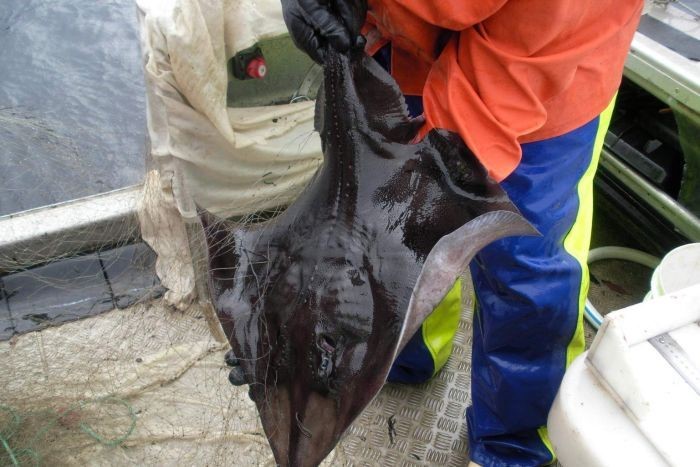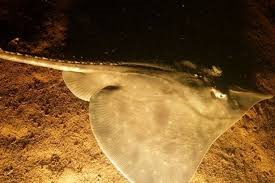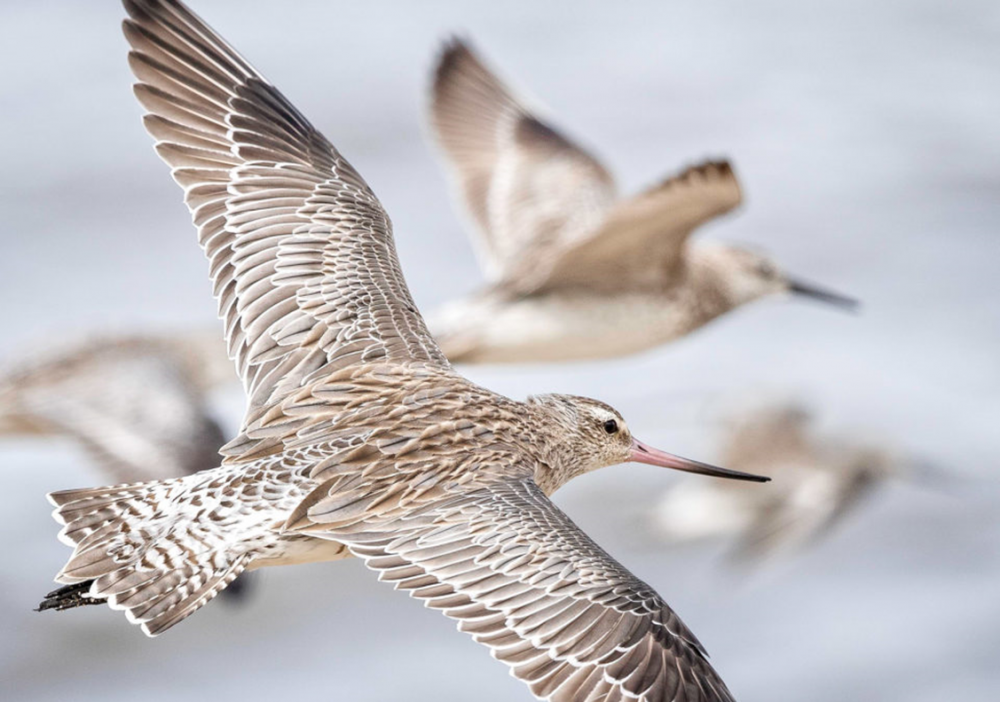Fish farms blunders in Macquarie Harbour threaten the only surviving population of the Maugean skate.

The maugean skate is believed to originate from prehistoric skate species, potentially hundreds of millions of years old, before fish had bones. It is one of the few skate species that can live in brackish water. When the supercontinent Gondwanaland broke up and separated this population became isolated. Now only a residue population remains in two estuarine systems, the Bathurst and Macquarie harbours. The species was discovered in 1988 by a Tasmanian researcher. Now the skate has possibly disappeared from the Bathurst altogether, with no detections for decades. The only other population is thought to be about 3,000 strong in Macquarie Harbour.
A recent increase in salmon farming in the harbour has caused a crash in oxygen levels in the harbour. This expansion occurred before we really knew anything about the skate. A group of scientists from the Institute of Marine and Antarctic Studies had only began studying their behaviour three years ago.
The Tasmanian Government admits the skate’s “numbers are low”, and it is facing criticism it does not have a recovery plan to protect the species. Wes Ford from the Environmental Protection Authority said, “The problem we have is that we don’t really have good baseline data going back more than 10 years ago because nobody was really looking at the populations we continue to collect information,” he said. “There has to be regular surveys of the populations to see what is actually happening to the skate so that’s a long-term commitment the companies will be needing to support, ensuring their industries are not impacting.” The official view is that skate population numbers appeared to be stable at the moment.
New studies are raising fresh concerns. Tasmanian Institute for Marine and Antarctic Studies (IMAS) scientists said declining environmental conditions due to salmon farming and changes in river flow have been piling pressure on the species. They believed a reduction in the salmon stocks and fallowing pens may be necessary if environmental conditions continued to deteriorate, to ensure the skate’s survival.
A little unusually, the latest study team has seen a need to issue an interim finding from the ongoing study warned:
Given the potentially limited genetic capacity of this small and spatially restricted population to adapt to changes occurring in the environment, there is an urgent management need to limit and reverse any further deterioration of benthic conditions in Macquarie Harbour which have the potential to impact the availability of favourable habitat and food sources of the Maugean skate.
Moreover, recognising that localised extinction may have occurred in Bathurst Harbour, a remote and pristine environment lacking anthropogenic pressures, any additional anthropogenic threats to the species in Macquarie Harbour could increase the risk of global extinction of the species.
Dr Stehfest is part of the team, “What we are hoping to do is get a clear picture of the health of the species and how much time it spends in different areas which have varying levels of oxygen. That will give us a picture of how it is coping with declining oxygen rates,” Dr Stehfest said.
As part of the study he has been he has been catching them and fitting them with an electronic tag which measures oxygen levels underwater at different depths. The tag transmits the data to “listening stations” deployed underwater.
Adding to concerns by experts is a recent genetic study which shows the skate has a limited genepool. Associate Professor Jayson Semmens believes this makes the species even more vulnerable.

Scientist Jeremy Lyle, “Preliminary research suggests the fish has limited ability to tolerate low oxygen levels. “The environmental health of the harbour is likely to be a crucial factor in the future wellbeing of the maugean skate,” he said. The results of the final study are expected early next year.
Photo: Jeremy Lyle , CSIRO
